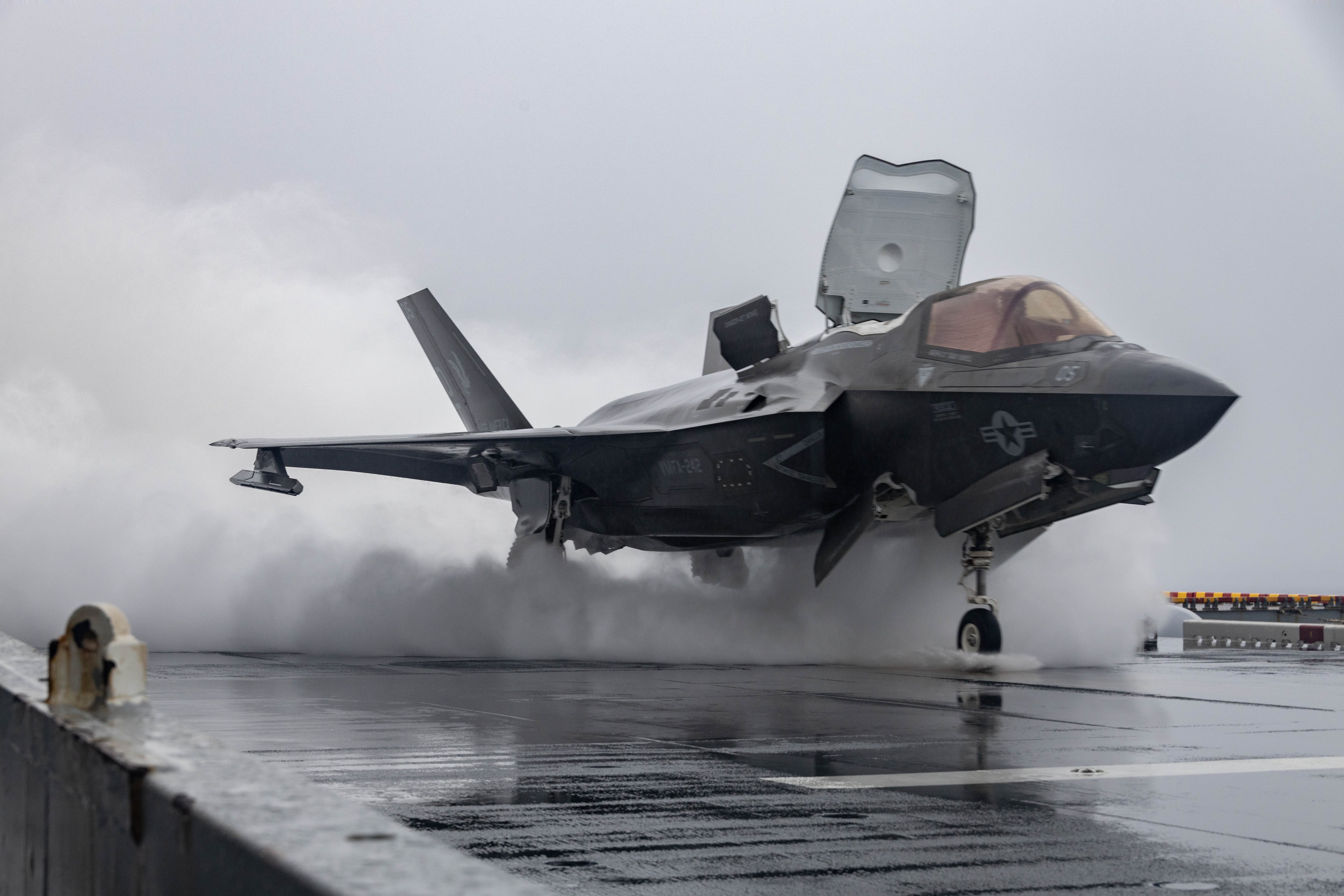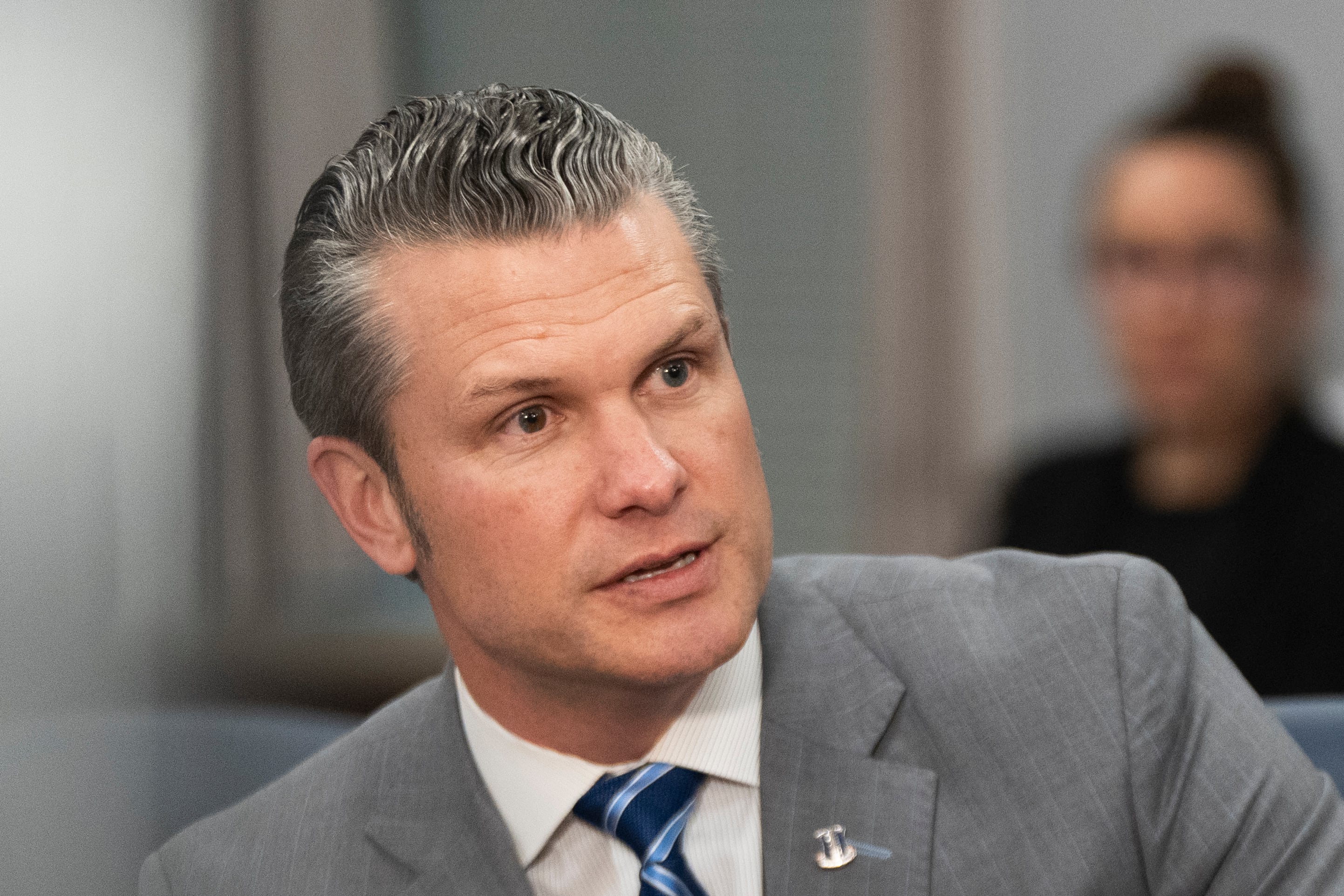The U.S. Marine Corps released a revised aviation strategy Monday that focuses on using autonomous systems, drones and artificial intelligence-driven software to ensure its aircraft fleet can survive in a fierce war zone.
And the Corps is also shifting its procurement plans for the F-35 Joint Strike Fighter to buy more carrier-based F-35Cs and fewer of the B variants that can hover and vertically land.
The Corps billed its 2025 Marine Corps Aviation Plan, the service’s first in three years, as a “roadmap to enhancing operational readiness and ensuring Marine aviation remains a lethal force.” A centerpiece of the plan, signed by deputy commandant for aviation Lt. Gen. Bradford Gering, is a modernization strategy the Corps calls “Project Eagle.”
“We are committed to shaping a future aviation force that is ready, resilient and capable of rapidly responding to emerging threats, wherever they may arise,” Col. Derek Brannon of Headquarters Marine Corps Aviation said. “Project Eagle builds on the progress we’ve made, and it prepares us to embrace technological innovation while ensuring we can deliver combat power across all domains.”
Project Eagle focuses on using advanced technology like AI alongside new concepts for generating Marine airpower, such as distributed aviation operations and decision-centric aviation operations, to ensure its aircraft can fight and operate in highly contested environments.
Distributed aviation operations focus on coordinating how the Marine Corps uses its aviation squadrons, command-and-control agencies, aviation logistics and ground support units, spread out across battlefields in a way that makes it harder for enemies to target them. This can include pushing command-and-control authorities to lower levels and keeping forces moving.
The decision-centric aviation operations concept aims to rapidly accelerate how quickly aviation elements make choices using cutting-edge technologies such as AI.
To become a “data centric and data enabled organization,” the plan said, Marine aviation needs to invest in infrastructure, personnel and training and make “transformative” leaps to use cutting-edge technologies.
“Linear incremental change will not be sufficient,” the plan said.
The plan also calls for Marine aviation to dedicate resources and funding to develop advanced capabilities such as future drones supporting logistics, advancements in aircraft survivability and “manned-unmanned teaming,” or pairing crewed aircraft with autonomous drone wingmen.
The Marine Corps is also shifting its F-35 plans to buy more carrier-based F-35Cs and fewer short takeoff and vertical landing F-35Bs as part of the plan, although the total number of Joint Strike Fighters the service plans to buy will remain unchanged at 420.
The Corps now plans to buy 280 F-35Bs and 140 F-35Cs, more than doubling the number of F-35Cs included in the 2022 plan, which called for 353 F-35Bs and 67 F-35Cs.
The Marines intend to transition four Marine Fighter Attack Squadrons — VMFA-232, VMFA-323, VMFA-112 and VMFA-134 — to F-35C squadrons, leaving the Corps with 12 F-35B squadrons and 8 F-35C squadrons.
The Corps expects to have 183 F-35Bs and 52 F-35Cs delivered by the end of 2025, according to the plan. The service aims to accelerate research and development on drone wingmen, known as collaborative combat aircraft, and get them flying alongside F-35s.
The plan also focuses on improving how the Marine Corps sustains its aircraft and said traditional methods that were previously effective “are no longer sufficient to meet the challenges operating in current and future contested environments.”
Sustainment changes being planned by the Corps include redesigning support equipment to make them more efficient, safe and effective; modernizing training systems; making greater use of additive manufacturing, digital modeling and other technologies to improve the supply chain; and encouraging aviation sustainment Marines to innovate and experiment to find better ways to keep aircraft flying.
Stephen Losey is the air warfare reporter for Defense News. He previously covered leadership and personnel issues at Air Force Times, and the Pentagon, special operations and air warfare at Military.com. He has traveled to the Middle East to cover U.S. Air Force operations.





